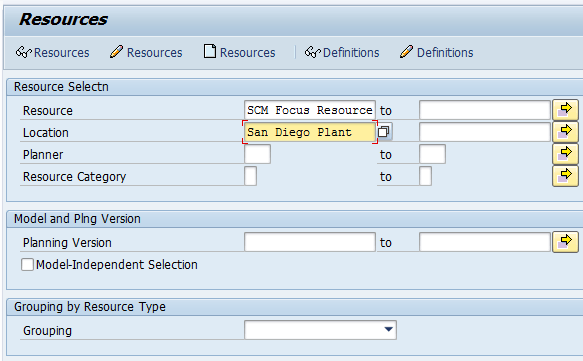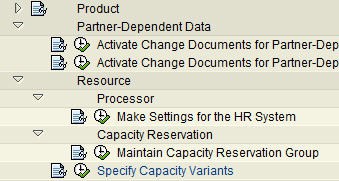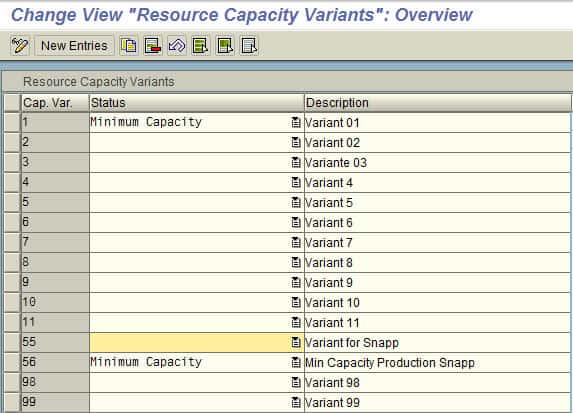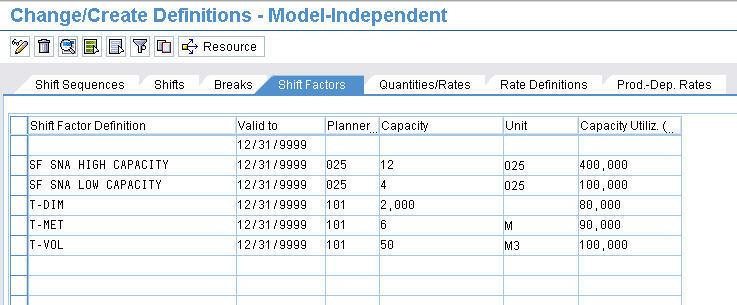How to Understand APO Resource Capacity Variants
Executive Summary
- Resources are used by SAP SNP and allow for capacity variants, which are optional resources.
- APO resources can be either capacity leveling and capacity constraining.
- Changes are made to SNP resources, which are covered in this article.

Introduction to Resources in APO
Resources are what represent physical capabilities in the supply network. You will learn about how resources are set up in APO.
Our References for This Article
If you want to see our references for this article and related Brightwork articles, see this link.
Resources in APO
One of the changes to SCM as of 5.0 is the ability to view much more detail in resources’ capacity. This is under
APO – Master Data – Resource
This will take you to the resource screen below:

After you select the resource, you will be taken to a detailed view. Here you can find all about the setup of the resource.
Resource configuration is a topic requiring its post. However, what we are going to look at is the capacity profile. We can bring this up by selecting the Capacity Profile button along the top of the page. When you do this, you must have one of the resource line items selected.

After selecting that button, you will be taken to the Capacity Profile screen below.
The boxes’ color identifies shifts, such as nonworking manual day, changed shift, and resource downtime. The upper area and the lower area are two views on the same date information. If you select the lower dates, the upper dates move, and vice versa. This allows you to alter the capacity of the resources in this view. It is important to consider that this is just the view of a single resource. Therefore you would need to go in and change each of the resources this way.
Capacity Leveling
These resources are used to perform leveling. One of the biggest issues with production planning is keeping the constraints (or in a non-constrained environment) the resources up to date with changing the factory floor.
Capacity Variants
This variability in resources is partially addressed with Capacity Variants. Variants allow you to modify resource capacity by the time of day, by week, or by month. This applies to nonbucket resources and bucket resources (bucket resources are defined by quantity capacity, not time capacity). Many variations can be modeled with the use of Capacity Variants. This includes:
- Breaks
- Shifts
- Quantities
- Material Dependent Rates
Of course, only one Capacity Variant can be used at a time or during one planning run. However, with a number of them, the flexibility of the model is enhanced significantly.
Modeling the variability of resources is one of the biggest challenges in supply chain modeling, and capacity variants can help. The Configuration of Resource Capacity Variants in the IMG..


We go to the Resource with the transaction (/SAPAPO/RES01). We then select the Definitions button.

Now we select the shift factor and enter in a shift factor and select save.

Here, we can see the programmed variability of the different shifts.

This can now be saved as a variant.
SNP Resource Capacity Changes
The book Supply Chain Planning with SAP APO explains the optimizer’s different resource capacities quite well.
“The SNP optimizer uses three different capacities: the normal capacity, the minimum capacity (which the optimizer tries to load independent whether there is a demand or not), and the maximum capacity, which is used in case the normal capacity are not sufficient (and requires additional costs). These capacities are modeled as capacity variants. The maximum capacity is always the capacity variant 1, t the normal and the minimum capacity are assigned to the variant number in transaction /SAPAPO/RESCOL“
Conclusion
Capacity variants are difficult to configure and place the APO resource flexibility at a serious disadvantage compared to competing applications. Companies must be willing to allocate a significant number of hours above what other planning applications require to obtain resource flexibility.
